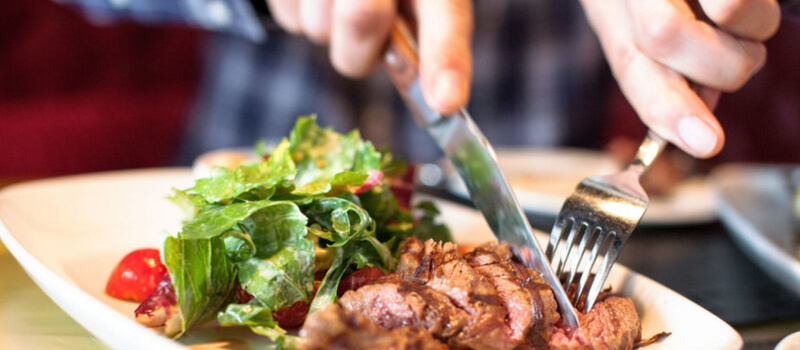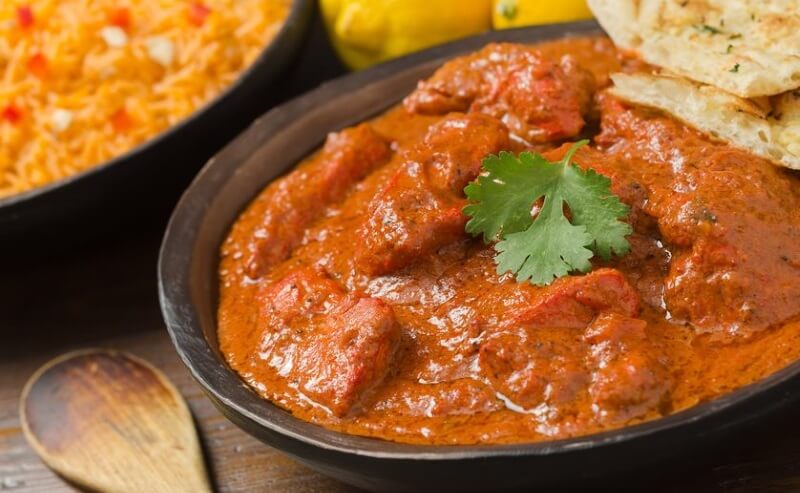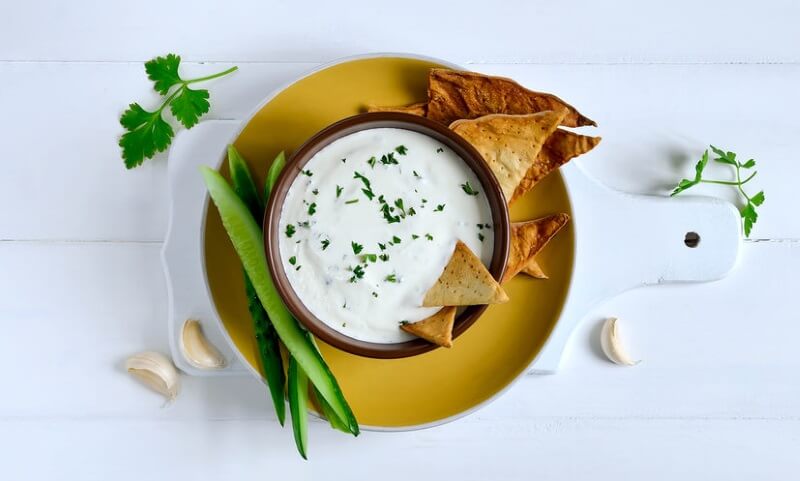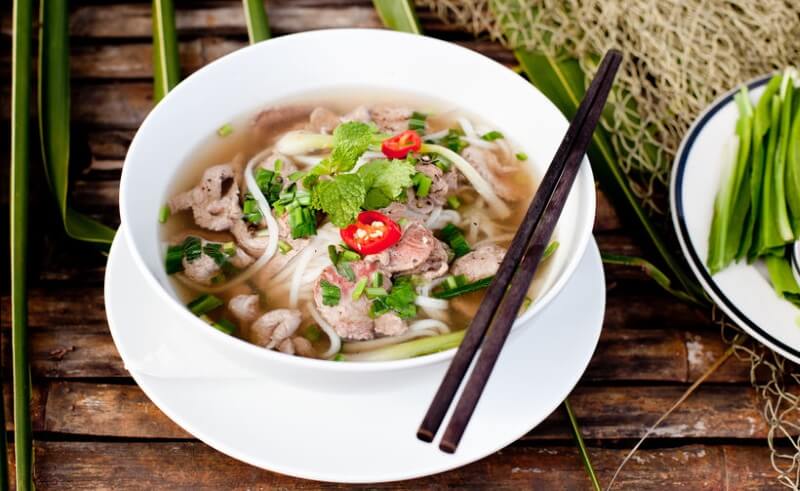Living with gastritis can be difficult. For people with acute gastritis, they only have to wait a couple of days or weeks before resuming normal eating patterns. This isn’t the case for patients suffering from chronic gastritis.
Can I still eat out with chronic gastritis? Of course. The key is knowing your trigger foods and understanding which delicious cuisines are gastritis-friendly. Various tools on the internet, such as apps, can be used to find diet-specific restaurants. Eating out with gastritis may be more challenging, but it doesn’t have to be impossible.
Understanding Gastritis
Gastritis is a condition wherein the stomach lining is inflamed. Both lifestyle choices and physiological factors can contribute to the development of gastritis. These include:
- Bacterial infection: The bacteria Helicobacter Pylori (H. pylori) is responsible for inflammations along the stomach lining and small intestine. This bacteria is the most common cause of ulcers and gastritis.
- Caused by medication overuse: Nonsteroidal anti-inflammatory drugs (NSAIDs) interferes with the mucosal production, which makes the stomach more susceptible to damage caused by gastric acid and pepsin.
- Alcohol abuse: Consistent alcohol use can erode parts of the stomach lining, leading to irritation and inflammation.
- Autoimmune response: Autoimmune gastritis is a rare condition. This type of gastritis occurs when the immune system targets parietal cells found in the stomach and attacks them.
To diagnose gastritis, your doctor needs to review your medical history, perform a thorough physical evaluation, and may recommend upper endoscopy.
Food and Gastritis: How Are They Related
Certain eating patterns, or a lack thereof, may increase a person’s risk of developing gastritis. A study published in the International Scholarly Research Notices suggests that individuals who practice irregular meal timing over a long period of time have an increased risk of developing gastritis.
The body secretes digestive juices according to regular meal timing. When no food is present during the digestive period, the stomach lining becomes more vulnerable to infections. Over the course of time, H.pylori can exist in the interim between food digestion and juice secretion, and develop in the host’s body for many years.
Continuous consumption of certain foods may irritate the stomach lining, leading to gastritis. Note that the effects of food are variable and dependent on a person’s tolerance for these kinds of foods.
Alcohol is one of the known triggers of gastritis. The presence of alcohol encourages the stomach to produce more acid. When done continuously, the stomach lining may erode, causing inflammation. Spicy and sour foods are believed to have the same effect on the stomach.
Contrary to popular belief, food alone can’t treat gastritis. However, dietary modifications are prescribed to help alleviate the symptoms of chronic gastritis. Patients who take a more conscientious approach to eating report significant improvements to gastritis symptoms.
Read more: What Is the Best Breakfast for Acid Reflux Sufferers?
Can Eating Out Trigger Gastritis?

Acute gastritis is a common complaint among travelers. During vacations, people tend to eat out frequently, consuming large amounts of alcohol alongside fatty and oily foods — foods that may not be a part of their daily meals.
As a result, the digestive system reacts to the overwhelming amount of unhealthy food by ramping up its digestive power in order to meet the body’s constant supply of food. The real reason behind acute gastritis among travels isn’t eating out, but the consistent consumption of unhealthy foods in restaurants.
In truth, eating out doesn’t have to lead to gastritis. Consuming unhealthy foods in moderation is one way to prevent gastritis from occurring when on vacation. Splitting meals and desserts, swapping out carbohydrates for vegetables, and drinking water instead of sugar-heavy drinks are just some ways to keep the digestive system balanced during travel.
Eating the Right Foods
Patients suffering from gastritis don’t have to skip dinner invites indefinitely. Below are approved foods for individuals with gastritis, and are easily available in restaurants:
1. Yogurt
A study published in The American Journal of Clinical Nutrition showed that consuming yogurt containing Lactobacillus and Bifidobacterium helps treat H.pylori in patients with gastritis. Researchers studied patients infected with H.pylori who were undergoing triple therapy (a treatment involving two antibiotics and one proton pump inhibitor).
86% of patients in a group were able to fight off their H.pylori infection. On the other hand, there was only a 71% reduction of H.pylori infection in the group that didn’t involve routine yogurt consumption. Filling your gut with healthy bacteria helps fight off other bacterial invasions, making the stomach lining less susceptible to gastritis.
2. Fermented Milk
A study published in the World Journal of Gastroenterology illustrates how fermented milk can increase the production of the gastric mucus gel layer in mice. This gel layer reduces the vulnerability of the stomach, specifically against gastritis caused by acetyl-salicylic acid.
3. Sauerkraut
Another type of fermented food, sauerkraut, can also be helpful in managing gastritis. Lactobacillus Plantarum, the dominant bacteria species in sauerkraut, shows anti-Helicobacter properties. Incorporating sauerkraut in a patient’s diet can help prevent H.pylori activity from spreading.
4. Broccoli
Broccoli, along with brussels sprouts, contains a nutrient called sulforaphane. Studies prove that these two vegetables contain an interactive strain that can fight off H.pylori infection, including those that are resistant to antibiotic treatment. These two vegetables can also be incorporated in diets of patients with stomach tumors caused by benzo a pyrene.
5. Garlic
Garlic has always been known for its antibacterial properties. They provide an extensive antibiotic spectrum, powerful enough to combat H. pylori. A study confirms that the regular consumption of allium vegetables (the group of foods including shallots, leeks, scallions, and chives) shows a much lower incidence rate of H.pylori.
Aside from curing the common diarrhea, garlic is also effective in treating bacteria that have become immune to antibiotics. Toxin production can be prevented altogether with garlic alone.
6. Apple Cider Vinegar
Long-term use of NSAIDs can lead to gastrointestinal imbalance. Drinking apple cider vinegar, the liquid derived from pressed apples, can reverse the damage from NSAID abuse by restoring balance into the gastrointestinal system.
The malic acid present in apple cider vinegar alters the acidity in the body. By stabilizing pH levels, beneficial bacteria are able to thrive and protect the body once again.
Cuisines Recommended for Gastritis Patients
Indian Cuisine

Indian food uses numerous spices and ingredients that are known to help fight inflammation. These include ginger, turmeric, cumin, and curry. Indian cuisine also uses yogurt, which is useful in reintroducing good bacteria in the gut. However, indian cuisine can also go heavy on red chilies. Make sure you request your dishes to be less spicy, or just avoid spicy dishes altogether.
What to try: Matar paneer, chicken curry, tikka masala, saag paneer
Greek Cuisine

Mediterranean cuisine is famous for using fresh ingredients, from leafy vegetables to whole grains. Mediterranean cuisine can be high on fats due to olive oil use so make sure to eat dishes that heavily feature olive oil and butter in moderation. Traditional greek cuisine is served as small plates, similar to tapas in Spain, which are meant to be shared with friends. Smaller plate sizes encourage groups to split up their food instead of eating large amounts of one dish.
What to try: Hummus, avgolemono, baked sardines, spanakorizo, tabouli
Chinese Cuisine

Chinese cuisine is incredibly variable thanks to the many culinary-rich provinces in China. Not all Chinese food has to be spicy and oily. Steamed dumplings, warm wonton soup, and stir-fried rice are all Chinese specialties that won’t upset the stomach. These dishes feature copious amounts of garlic and ginger, as well as vegetables like bok choy and broccoli. Similar to Indian foods, make sure to steer clear of dishes that incorporate large amounts of spices and acid, like the hot and sour soup.
What to try: Meat with garlic sauce, steamed veggies in oyster sauce, egg drop soup, xiao long bao
Vietnamese Cuisine

Vietnamese cuisine is one of the cleanest, freshest cuisines in the world. Instead of oil, soups are made out of broth. Their spices are composed primarily of cilantro, mint, and basil, which aid in digestion and help ward off inflammation. Vietnamese food is generally lower in calories because of their technique: instead of using oil and frying for flavor and texture, Vietnamese cuisine relies on herbs for natural, “clean” flavor.
What to try: Goi cuon, pho, goi ngo sen, steamed fish, banh mi
Specialty Restaurants for Gastritis Sufferers: Do They Exist?
Finding the right restaurant when dining with someone suffering from gastritis can seem impossible. Thankfully, there are applications available to help gastritis patients find a suitable dining place. Yelp and OpenTable may provide some insight on a restaurant’s menu, but it’s apps like FindMyMacros that really make a difference.
FindMyMacros allows users to discover meals based on nutritional value. The data is collected from other users who log information based on their previous dining experience. With apps like this, people with gastritis can filter through dishes and restaurants that may trigger stomach discomfort.
Apps like these are crucial in locating specialty restaurants that can accommodate special diets. An example of which is The Warren, a gastropub in New York City that offers food friendly enough for patients suffering from gastroenterologists.
The restaurant is owned by gastroenterologist Dr. Prem Chattoo. In an interview, he mentions that spicy condiments are limited in his menu in order to prevent gastric flare-ups. Although indulgent foods like poutine are present on the menu, Dr. Chattoo gives a healthier twist to hearty dishes by presenting them in smaller plates instead of traditionally big servings.
Tips On Eating Out With Gastritis

1. Keep a food diary: Different foods produce varying reactions in different people. Knowing which specific foods cause gastric flare up can help you in the long-run. Take note of foods that irritate your stomach and avoid those in the future.
2. Eat smaller meals: Instead of ordering big meals, consider ordering smaller plates to avoid eating too much in one sitting. You can also share food with your friends to make sure you don’t upset your stomach by eating too much.
Eating less more frequently is the secret to managing gastritis. By regulating your food intake, you’re able to control your stomach’s acid production, which can help prevent gastric flare-ups.
3. Avoid alcohol: Whether your gastritis is caused by alcohol, NSAIDs, or H.pylori, it’s crucial to avoid alcohol altogether. Alcohol encourages stomach lining irritation and erosion, leading to worse symptoms of gastritis.
4. Use antacids when eating: If you want to be able to enjoy your food while being completely symptom-free, take an antacid before and after meals. This helps keep acid production in check so you can enjoy a night out with friends and family.
5. Stay away from spicy and sour food: As discussed, even the healthiest cuisines use spices and acids to some degree. Navigate around the menu to ensure that you avoid these ingredients. Various alternatives are available without having to sacrifice taste.
6. Look up a restaurant’s menu in advance: The best way to prepare for a restaurant is to anticipate the food in advance. Do your research and look up menu items to pre-select your options. If you’re concerned about a specific dish, you can call the restaurant, learn about the ingredients, and ask for possible alternatives.
Find Better Ways to Manage Your Gastritis
At the Gastro Center NJ, we believe that your gastrointestinal problems shouldn’t dictate your lifestyle. We’re here to help you understand gastritis and the state of your gastrointestinal health.
Book an appointment with us today and let’s start finding solutions together.
